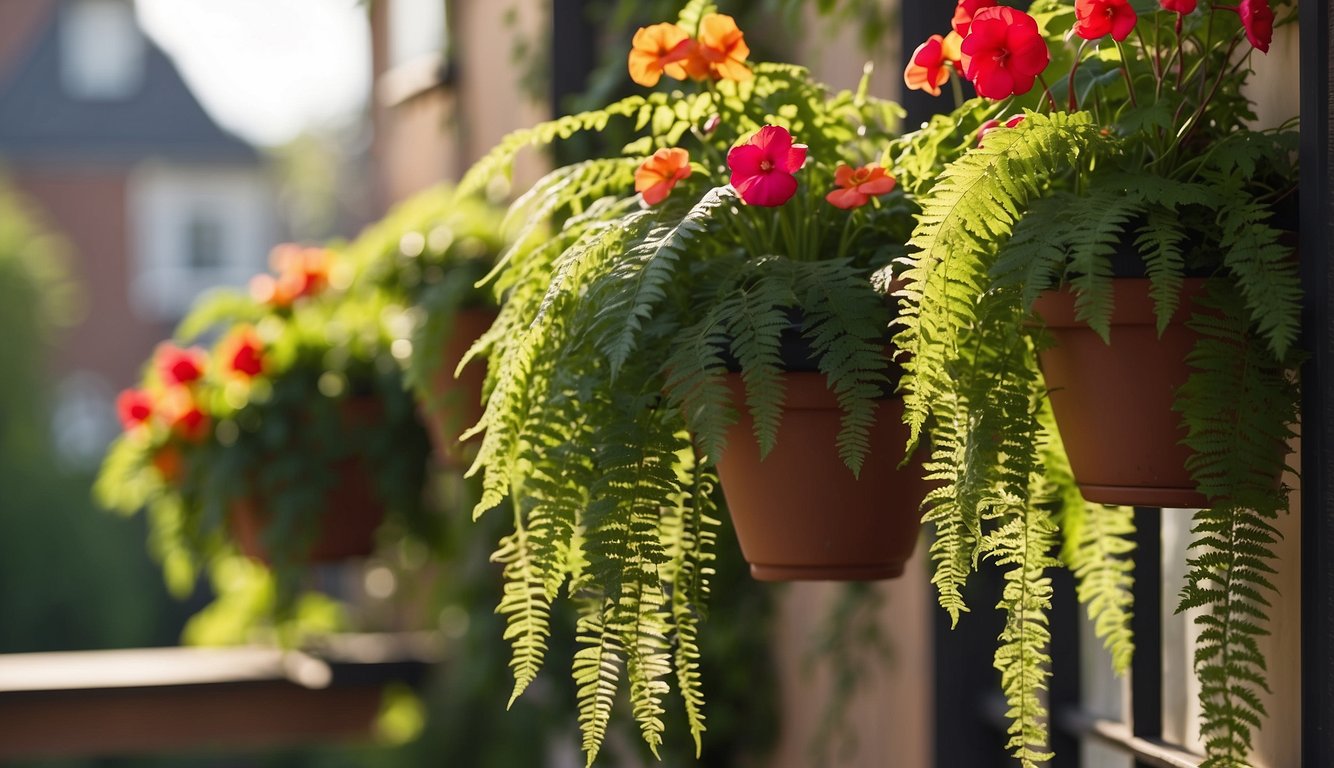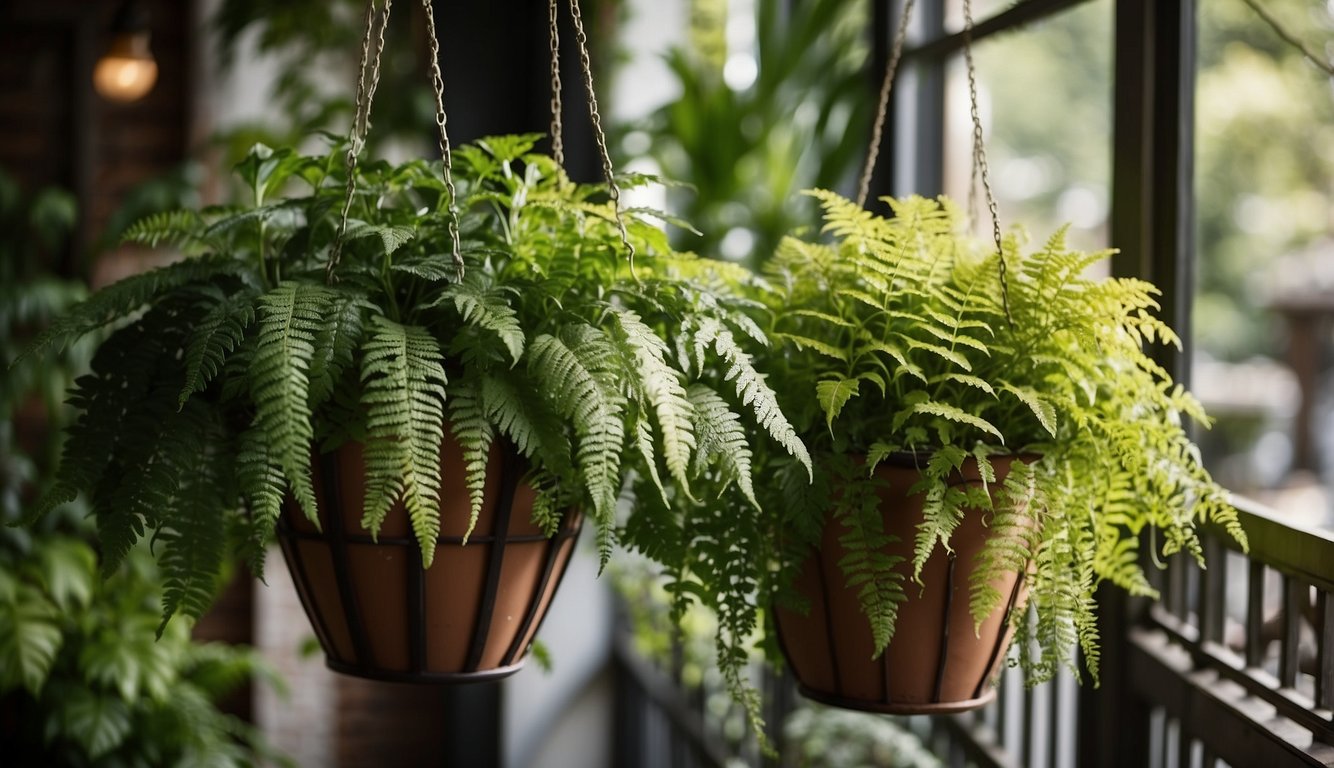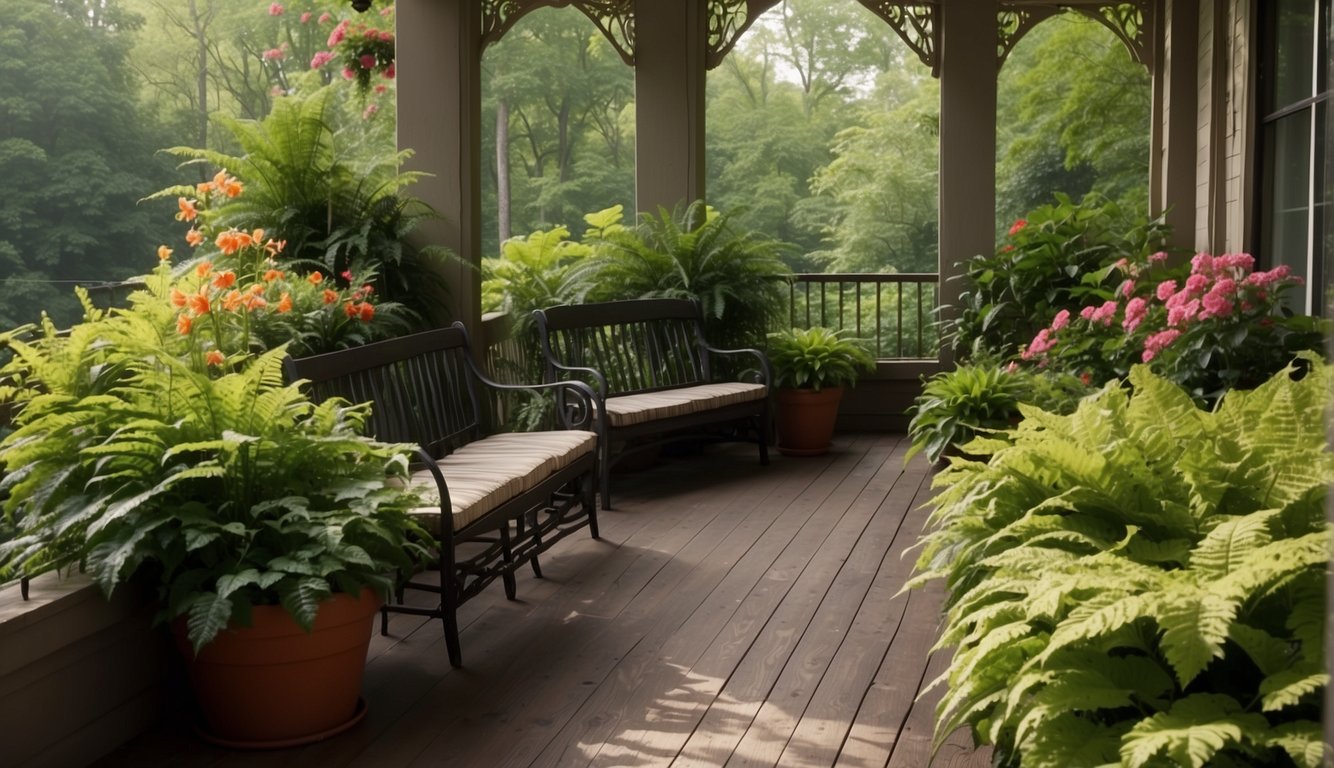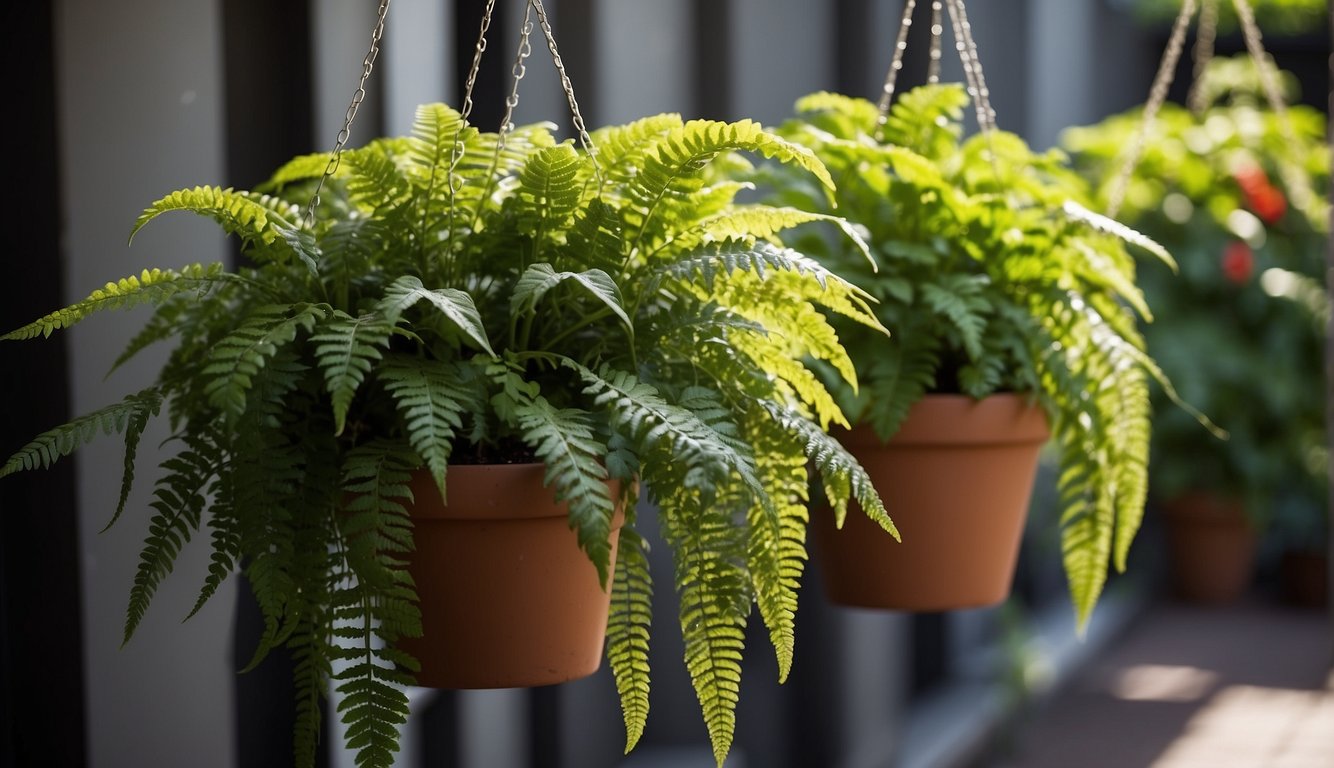Shade-loving balcony plants are a great way to bring life and color to your outdoor space while also providing some relief from the sun. With the right selection of plants, you can create a lush and vibrant garden that thrives in even the shadiest of areas. In this article, we will explore the best shade-loving plants for your balcony, how to care for them, and tips for designing and maintaining a beautiful shade garden.

Selecting the right plants for your space is crucial when it comes to creating a successful shade garden. While some plants prefer full sun, others thrive in partial shade or full shade. It’s important to consider the amount of sunlight your balcony receives throughout the day and choose plants accordingly. Some popular shade-loving plants include ferns, hostas, impatiens, and begonias. These plants are not only beautiful, but they are also relatively easy to care for, making them a great choice for beginners.
Caring for shade-loving plants requires a bit of attention to detail, but it’s nothing too complicated. Most shade-loving plants prefer moist, well-draining soil and require regular watering. It’s also important to keep an eye out for pests and diseases, especially if your balcony is located in a humid or shady area. With a little bit of care and attention, your shade-loving balcony garden can thrive and provide you with a beautiful and relaxing outdoor space.
Table of Contents
Key Takeaways
- Select plants that thrive in shade and match the amount of sunlight your balcony receives.
- Provide adequate moisture and drainage for your shade-loving plants.
- Regularly check for pests and diseases to keep your plants healthy.
Selecting the Right Plants for Your Space
Understanding Light Conditions
Before selecting plants for your balcony, it’s important to understand the light conditions of your space. North-facing balconies receive little to no direct sunlight and are considered shady, while south-facing balconies receive direct sunlight for most of the day and are considered sunny. East and west-facing balconies receive varying degrees of sunlight throughout the day.
When selecting plants for your balcony, it’s important to choose plants that are suitable for the light conditions of your space. Shade-loving plants such as ferns, hostas, and hellebores are ideal for north-facing balconies, while sun-loving plants such as petunias, marigolds, and geraniums thrive in direct sunlight.
Choosing Plants for Balconies
When selecting plants for your balcony, it’s important to consider the size and layout of your space. Small balconies may benefit from compact plants such as herbs and succulents, while larger balconies may be able to accommodate larger plants such as shrubs and small trees.
It’s also important to consider the maintenance requirements of your plants. Some plants require frequent watering and pruning, while others are low maintenance and require little care.
In addition to considering the light and maintenance requirements of your plants, it’s also important to choose plants that complement the style and decor of your balcony. Consider the colors and textures of your plants, and choose plants that complement the colors and materials of your balcony furniture and decor.
Overall, selecting the right plants for your balcony requires careful consideration of the light conditions, size and layout of your space, maintenance requirements, and aesthetic preferences. By choosing plants that are suitable for your space, you can create a beautiful and thriving balcony garden that enhances your outdoor living space.
Caring for Shade-Loving Plants

Shade-loving plants require special care to thrive in low-light conditions. In this section, we’ll discuss the key factors to consider when caring for your shade-loving balcony plants.
Watering and Moisture
Watering is crucial for the growth and well-being of your shade-loving plants. However, overwatering can lead to root rot and other problems. We recommend checking the moisture level of the soil regularly to ensure that it is not too wet or too dry.
Shade-loving plants generally prefer moist soil, but it is important to avoid waterlogging. To prevent waterlogging, ensure that the soil is well-drained and that the pots have adequate drainage holes. If you notice that the soil is too dry, water the plant thoroughly until the water drains out of the bottom of the pot.
Soil and Fertilization
The right soil is essential for the healthy growth of shade-loving plants. These plants prefer a well-draining soil that is rich in organic matter. We recommend using a potting mix that is specifically formulated for shade-loving plants.
Fertilization is also important for the health of your plants. However, it is important to avoid over-fertilizing, as this can lead to burn and other problems. We recommend using a slow-release fertilizer that is specifically formulated for shade-loving plants. Be sure to follow the instructions on the fertilizer package carefully.
In summary, caring for shade-loving plants requires attention to watering and moisture, as well as soil and fertilization. By following these tips, you can ensure that your balcony plants thrive in low-light conditions.
Designing Your Shade Garden

When designing a shade garden, there are a few important factors to consider. First, we want to create visual interest by incorporating a variety of textures, colors, and patterns. Second, we want to make sure we are using the right plants for the level of shade in our balcony. Finally, we want to consider container gardening ideas to incorporate container plants for shade.
Creating Visual Interest
One way to create visual interest in a shade garden is to incorporate a variety of greenery. We can use plants with different leaf shapes and sizes to add texture to the garden. For example, we can mix plants with large, broad leaves with those that have small, delicate leaves. We can also use plants with different shades of green to add depth and dimension to the garden.
Another way to create visual interest is to use patterns. We can use plants with variegated leaves or those that have interesting patterns on their leaves. For example, we can use plants with striped or speckled leaves to add interest to the garden.
Incorporating Containers
Container gardening is a great way to incorporate plants into a balcony garden. We can use hanging baskets to add height to the garden and to create a vertical garden. We can also use containers of different sizes and shapes to add visual interest to the garden.
When choosing container plants for shade, we want to make sure we are using plants that can thrive in low light conditions. Some great options for container plants for shade include ferns, hostas, and heucheras. We can also use annuals such as impatiens and begonias to add color to the garden.
In conclusion, designing a shade garden on a balcony can be a fun and rewarding project. By incorporating a variety of textures, colors, and patterns, and using container gardening ideas, we can create a beautiful and thriving garden even in deep shade.
Maintaining Seasonal Interest

At times, maintaining a colorful and vibrant balcony garden throughout the year can be a challenge. However, with a little planning and effort, it is possible to have a beautiful balcony garden that remains attractive and healthy all year round. In this section, we will discuss some strategies that can help maintain seasonal interest in your balcony garden.
Seasonal Plant Selection
Choosing plants that bloom in different seasons is an excellent way to maintain seasonal interest in your balcony garden. For instance, planting spring flowers such as tulips, daffodils, and hyacinths can add a splash of color to your balcony garden during the spring season. During the summer, you can plant annuals like petunias, marigolds, and impatiens to keep your balcony garden looking attractive. In the fall, you can add hardy perennials such as mums, asters, and sedum to your balcony garden to add color and texture.
Overwintering Strategies
Overwintering is another strategy that can help maintain seasonal interest in your balcony garden. Overwintering refers to the process of protecting plants from cold weather so that they can survive the winter season and bloom again in the spring. Some plants, such as hardy perennials, can survive the winter season without any special care. However, for other plants, you may need to take some extra steps to protect them from the cold weather.
One way to overwinter plants is to move them indoors. For instance, you can move potted plants indoors and place them near a sunny window. You can also cover outdoor plants with burlap or other protective materials to shield them from the cold weather. Additionally, you can add a layer of mulch around the base of your plants to help insulate them from the cold.
In conclusion, maintaining seasonal interest in your balcony garden requires careful planning and effort. By choosing plants that bloom in different seasons and using overwintering strategies, you can keep your balcony garden looking attractive and healthy all year round.
Conclusion

In conclusion, we have discussed several shade-loving balcony plants that can add beauty and color to your outdoor space. Whether you prefer flowering plants or ornamental grass, there is a wide variety of options to choose from.
One of the best options for a shade-loving balcony plant is the begonia. This plant thrives in partial shade and can bloom until October, adding a pop of color to your balcony. Another great choice is the hellebore, which flowers early in the season and can provide color during the grayer months.
If you prefer ornamental grass, the Hakonechloa is an excellent choice. This grass is shade-tolerant and can add a unique texture to your balcony. For those who want to add some height to their balcony, consider the Fatsia japonica. This shrub can grow up to 10 feet tall and can thrive in the shade.
It is important to note that not all plants are suitable for all balcony conditions. Before selecting a plant, make sure to consider the lighting conditions and temperature of your balcony. Additionally, be sure to choose plants that are suitable for the size of your balcony.
In summary, adding shade-loving balcony plants can transform your outdoor space into a beautiful and relaxing oasis. With a little bit of research and some careful planning, you can create a balcony garden that is both aesthetically pleasing and functional.
Frequently Asked Questions
What are the best potted plants for a shaded porch?
There are many plants that thrive in shaded areas. Some of the best potted plants for a shaded porch include ferns, hostas, impatiens, and begonias. These plants are easy to care for and add a touch of greenery to your porch.
Which tall container plants thrive in shaded areas?
If you’re looking for tall container plants that thrive in shaded areas, consider using bamboo, fiddle leaf figs, or snake plants. These plants are low-maintenance and can grow up to six feet tall.
Can you recommend low maintenance plants for a shade-filled balcony?
Yes, some of the low maintenance plants for a shade-filled balcony include spider plants, ZZ plants, and peace lilies. These plants require minimal care and can add a pop of green to your balcony.
What are some evergreen plants suitable for shade that can be potted?
Some evergreen plants suitable for shade that can be potted include boxwood, holly, and yew. These plants are great for adding year-round greenery to your shaded porch or balcony.
Which flowers are ideal for growing on a porch that receives no direct sunlight?
If your porch receives no direct sunlight, you can still grow flowers such as impatiens, begonias, and fuchsia. These flowers thrive in shaded areas and can add a pop of color to your porch.
Are there any trailing plants that are suited for shaded container gardens?
Yes, there are many trailing plants that are suited for shaded container gardens such as English ivy, vinca, and creeping Jenny. These plants can add a beautiful cascading effect to your shaded porch or balcony.


